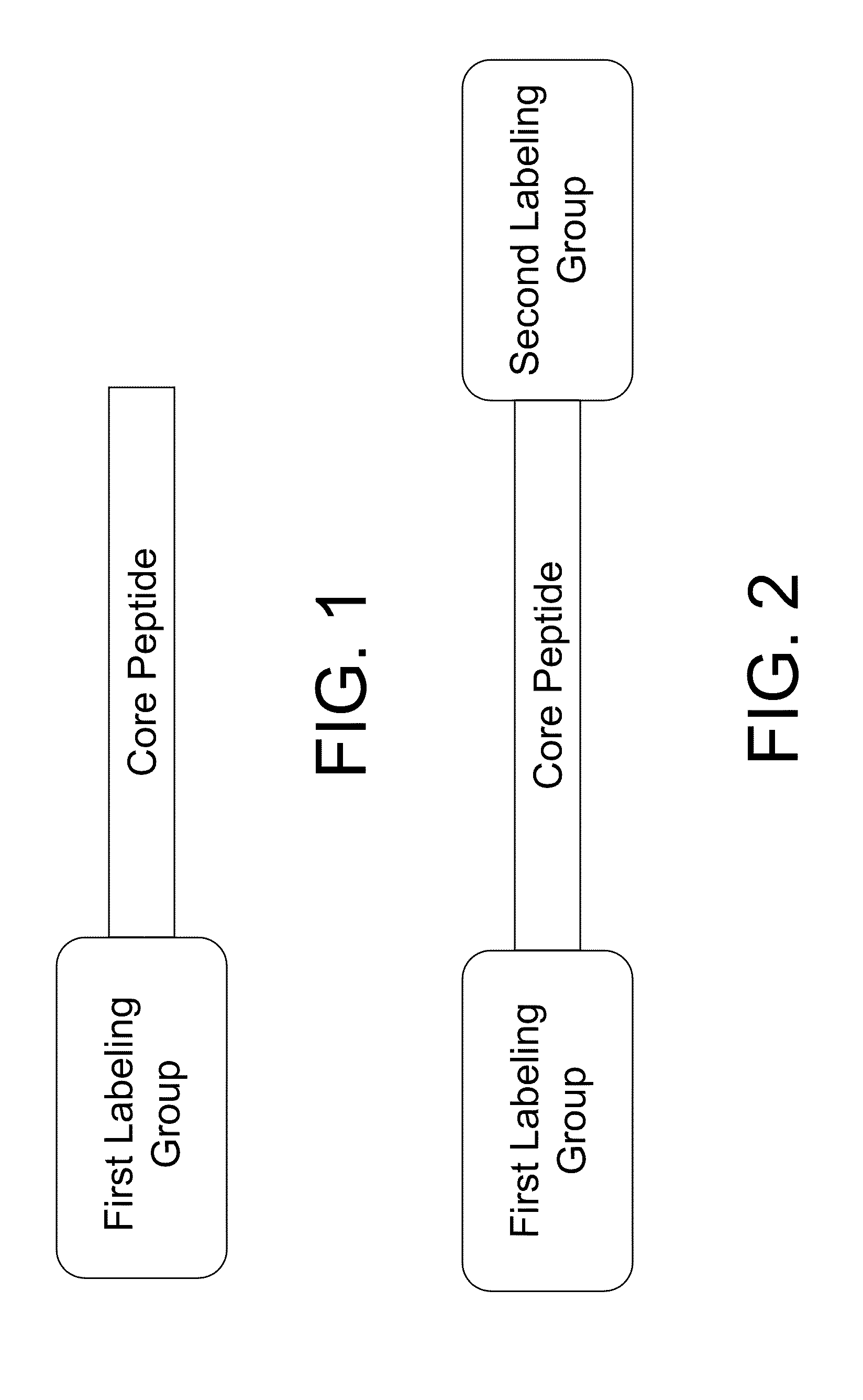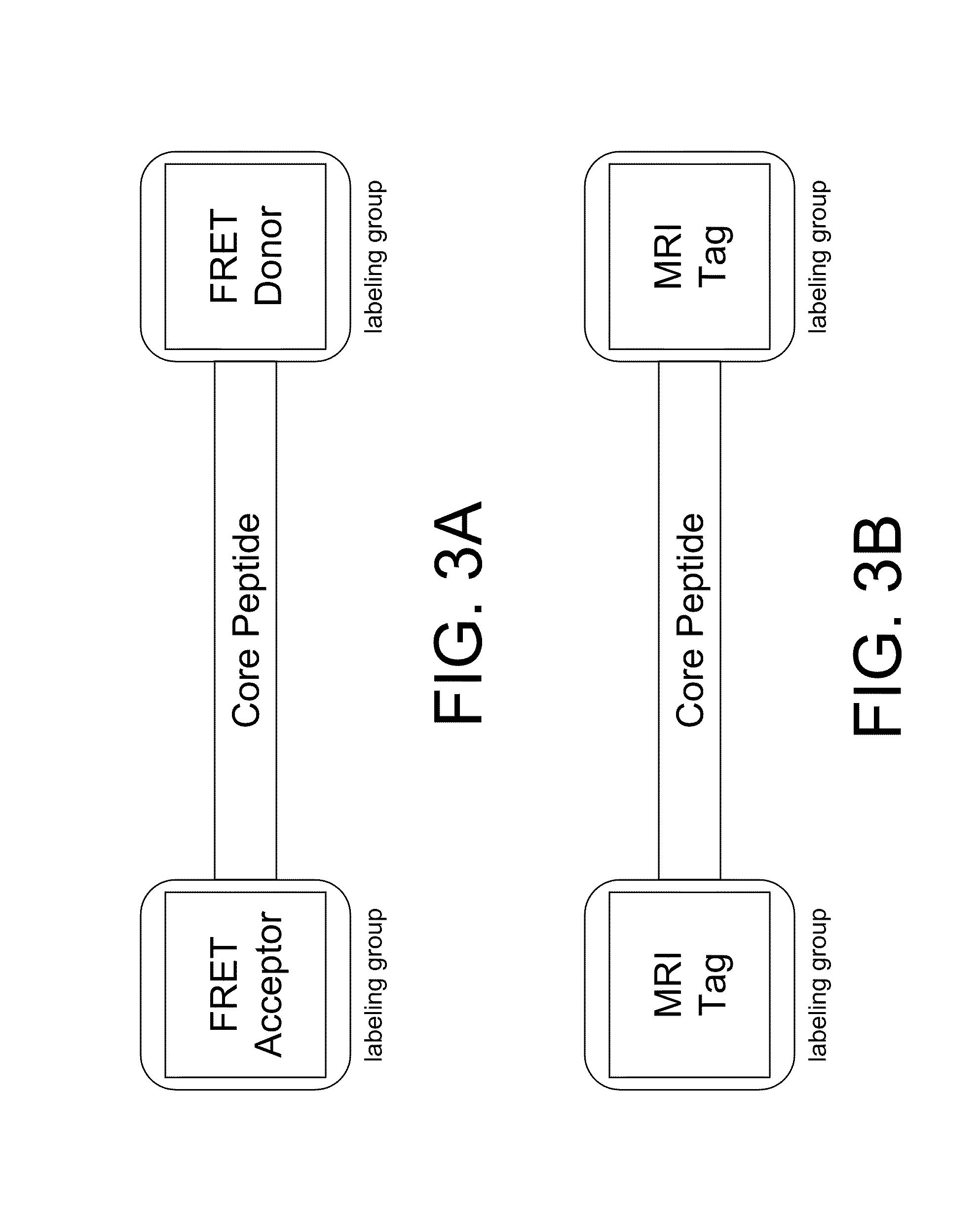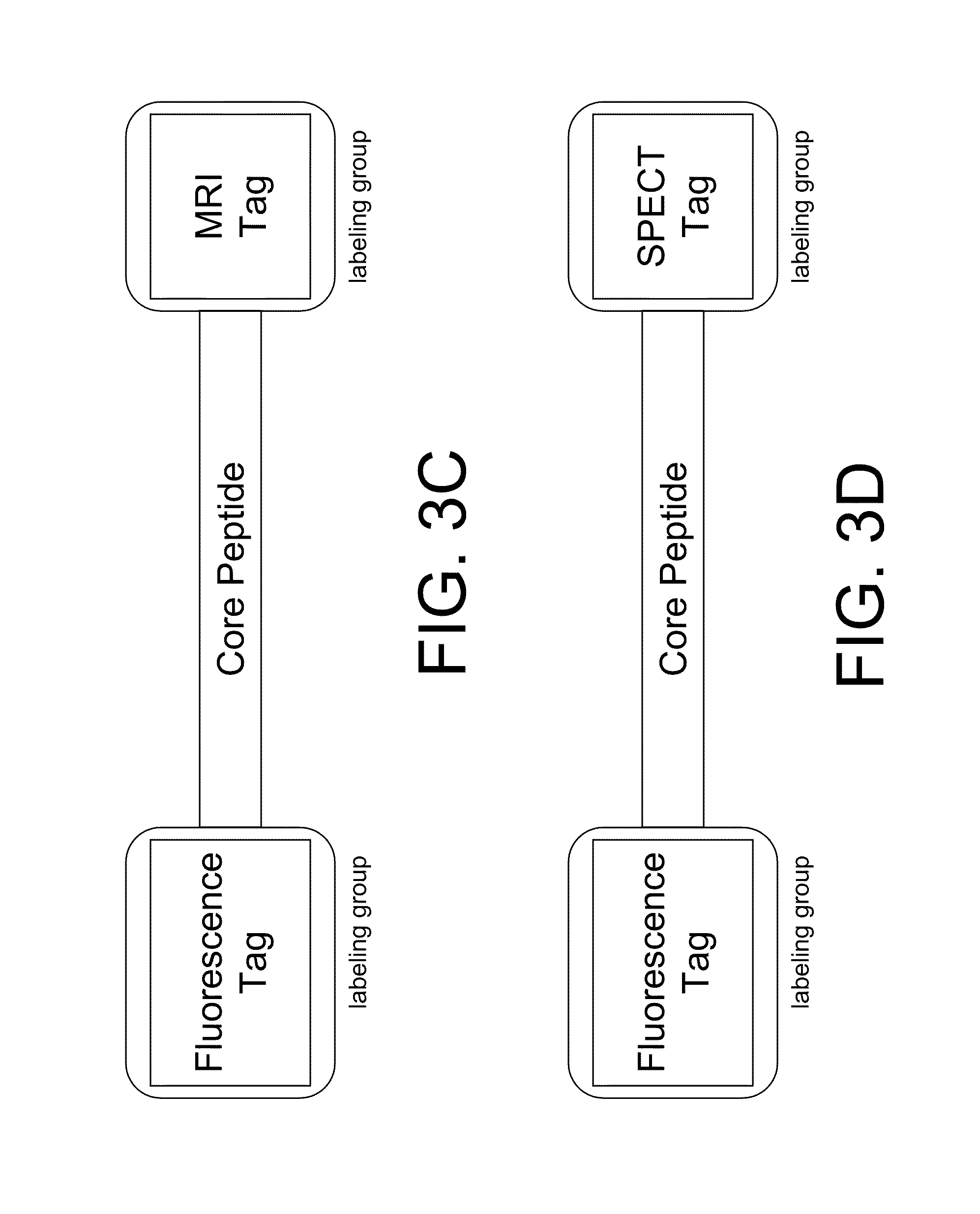Smart contrast agent and method for detecting transition metal ions and treating related disorders
a technology contrast agents, applied in the direction of drug compositions, peptide sources, peptide/protein ingredients, etc., can solve the problems of insufficient local variation of transition metal ions to impart enough, and the distribution of transition metals inside the human body is not uniform, so as to reduce the negative effects of a disease
- Summary
- Abstract
- Description
- Claims
- Application Information
AI Technical Summary
Benefits of technology
Problems solved by technology
Method used
Image
Examples
example 1
A Fluorescent Agent that Includes 2 Labeling Groups
[0155]The compound used in this example will be referred to as P1P and includes the following sequence, K(FAM)PHGGGWGQK(dabcyl).
[0156]P1P was chemically synthesized, in its zwitterionic form, using standard Fmoc / tBu methods (W C Chan, et al. 2000). The K(FAM) and K(dabcyl) groups were attached to the side chain of each lysine residue, prior to their attachment to the core peptide (PHGGGWGQ). Lysine peptide building blocks incorporating FAM and dabcyl on to the side chain are commercially available as Fmoc-Lys(5-FAM)-OH and Fmoc-L-Lys(dabcyl)-OH. These building blocks were used in the synthesis procedure, using standard Fmoc / tBu techniques for peptide synthesis. The quality of the commercially available building block, Fmoc-Lys(5-FAM)-OH, can vary and a direct separation of potential isomeric K(FAM) variations in the peptide product by HPLC was not possible, because of similar column retention times. The fluorescence properties of th...
example 2
An Agent that Uses Both a Fluorescent and 1H MRI Detection Channels
[0168]The compound used in this implementation of the invention will be referred to as P15 and has the following sequence, K(DO3A)K(FAM)PHGGGWGQK(dabcyl)K(DO3A), where the K(DO3A) group denotes a DO3A group attached to the peptide backbone through a L-lysine linker, as shown below.
[0169]P15 was chemically synthesized, in its zwitterionic form. The attachment of the K(FAM), K(dabcyl), and K(DO3A) groups however necessitated the FAM, dabcyl and DO3A groups to be attached to the side chain of each lysine residue, prior to their incorporation into the backbone chain. Lysine peptide building blocks incorporating FAM, dabcyl, and DO3A onto the side chain are commercially available as Fmoc-Lys(5-FAM)-OH, Fmoc-L-Lys(dabcyl)-OH, and Fmoc-L-Lys(DO3A)-tris(t-Bu)—OH. These building blocks were used in our synthesis procedure using standard Fmoc / tBu techniques for peptide synthesis. The crude peptide product was purified using re...
example 3
A Fluorescent Agent that Uses 2 Labeling Groups with Improved Metal Binding Affinities
[0183]The compound used in this example will be referred to as P41, includes the following sequence, K(6-FAM)PHGGGWGQK(dabcyl), where the K(6-FAM) is shown below.
[0184]P41 was chemically synthesized, in its zwitterionic form, using standard Fmoc / tBu methods (W C Chan and PD White 2000). Commercially available Fmoc-Lys(FAM)-OH building blocks were found to sometimes suffer from lower than advertised purity and an unclear isomeric chemical structure. To achieve a higher quality and more precise synthesis, Fmoc-Lys(FAM)-OH building blocks were not used. The 6-FAM group was instead directly added to the target lysine side chain in an additional step following the primary synthesis of the peptide backbone chain. The crude peptide product was purified using reverse-phase HPLC. Purification was continued until >90% purification was achieved, as confirmed by HPLC and electrospray mass spectrometry (FIG. 20...
PUM
| Property | Measurement | Unit |
|---|---|---|
| frequency | aaaaa | aaaaa |
| half life | aaaaa | aaaaa |
| detection wavelength | aaaaa | aaaaa |
Abstract
Description
Claims
Application Information
 Login to View More
Login to View More - R&D
- Intellectual Property
- Life Sciences
- Materials
- Tech Scout
- Unparalleled Data Quality
- Higher Quality Content
- 60% Fewer Hallucinations
Browse by: Latest US Patents, China's latest patents, Technical Efficacy Thesaurus, Application Domain, Technology Topic, Popular Technical Reports.
© 2025 PatSnap. All rights reserved.Legal|Privacy policy|Modern Slavery Act Transparency Statement|Sitemap|About US| Contact US: help@patsnap.com



